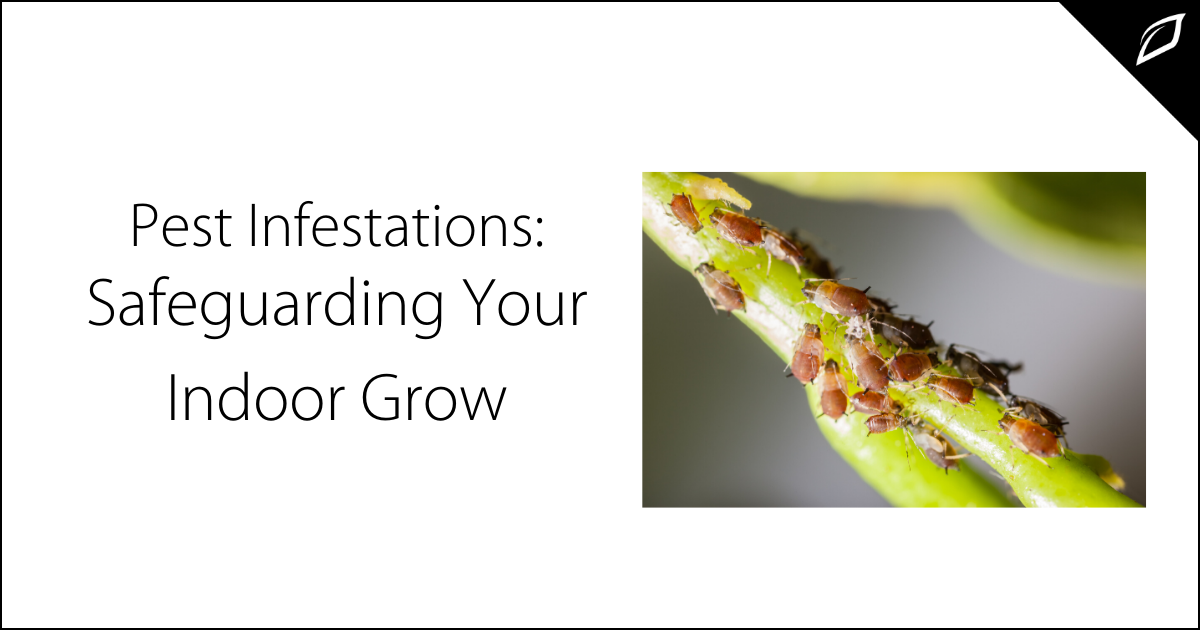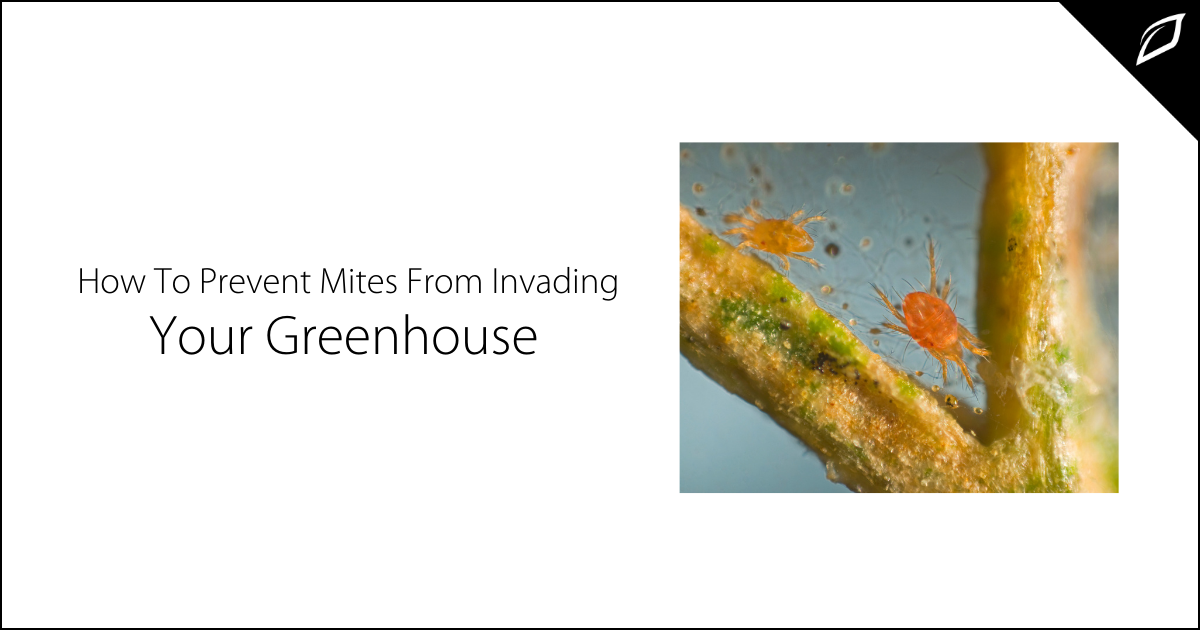How to Prevent Mites From Invading Your Greenhouse
University of Florida (UF) researchers have released their latest insights on mites known to attack hemp plants in Florida. For growers contemplating...

 Pests have been a problem for farmers since the dawn of time. Growing nutritious plants is a veritable buffet for insects. In the past, growers were limited to crop dusting with harmful chemicals. But things have changed, at least for some.
Pests have been a problem for farmers since the dawn of time. Growing nutritious plants is a veritable buffet for insects. In the past, growers were limited to crop dusting with harmful chemicals. But things have changed, at least for some.
One of the best ways to prevent pests is by taking your grow operation indoors, if possible. This makes it almost impossible for pests to infest your plants. Once a pest outbreak does occur in your garden, plants are less likely to produce to their full potential—the stress of combating the infestation stunts a plant's growth, resulting in lower crop yields.
If you still find pests inside, here are some strategies to keep you growing.
The time to think about pest control starts when you draw up the plans for your indoor grow. Creating a pest-free environment requires planning and a long-term maintenance plan, but it's worth it. A well-thought-out grow room provides a barrier between your plants and the outside world, leaving insects to find food elsewhere.
With so many things to consider when planning your grow space, it's essential to think about how well the room is sealed, and how easy it will be to maintain and clean.
There are many options to make sure the room is kept sealed. Inspect entry points and use weather stripping, or mylar to ensure nothing can get inside. Cayenne pepper can be made into a versatile repellent for everything from aphids to beetles. It is a go-to formula for organic gardeners, and businesses looking to save money on harsh chemical pesticides that are detrimental to the environment. The homemade insecticide (google it for recipe options) is said to repel such damaging garden pests as leafhoppers and spittlebugs. Spray it outside around entry points to keep insects from finding a way inside.
Once your grow room is sealed, the only thing that can pollute the space is what enters the room with you, or on you. Insects are specialists when it comes to attaching to clothing and moving from location to location. Keeping yourself and your growing environment clean is crucial to keeping pests from entering and making your grow house their new home.
Some growers change their clothes before entering the grow room, and keeping a spare set of clothing will help reduce the risk of pests infiltrating your grow space.
Regularly sterilizing equipment with rubbing alcohol or hydrogen peroxide will go a long way in keeping pests far from your plants.
Many grow mediums are moderately safe when it comes to pests, especially hydroponic methods. Clay pellets, rockwool, and other sterile mediums are unlikely to cause issues when it comes to pests.
Soils are typically where you need to be concerned as they can host an array of pests. You can avoid it by using hydroponic methods or by buying soil from a reliable source with a good reputation. Make sure the soil you buy doesn't have any non-composted plant material that could contain pests, eggs, or diseases.
There are some other ways to eliminate pests that have managed to gain entry to your garden. You can use traps which to attract the insects away from your plants. Simple plastic cups with a small amount of red wine, with plastic wrap covering the top with small holes punched in it, is a great way to capture unsuspecting bugs. You can also use sulfur burners to deter pests from your plants.
In the end, your plants will be much happier and produce it’s projected yield if you do your due diligence on pest control.

University of Florida (UF) researchers have released their latest insights on mites known to attack hemp plants in Florida. For growers contemplating...

Growing inside a greenhouse provides your plants with a certain amount of protection from harsh weather conditions, but pests can still become an...

Greenhouse farming has been a part of our growing history worldwide since at least the Roman era. But evolving technology and climate change are...